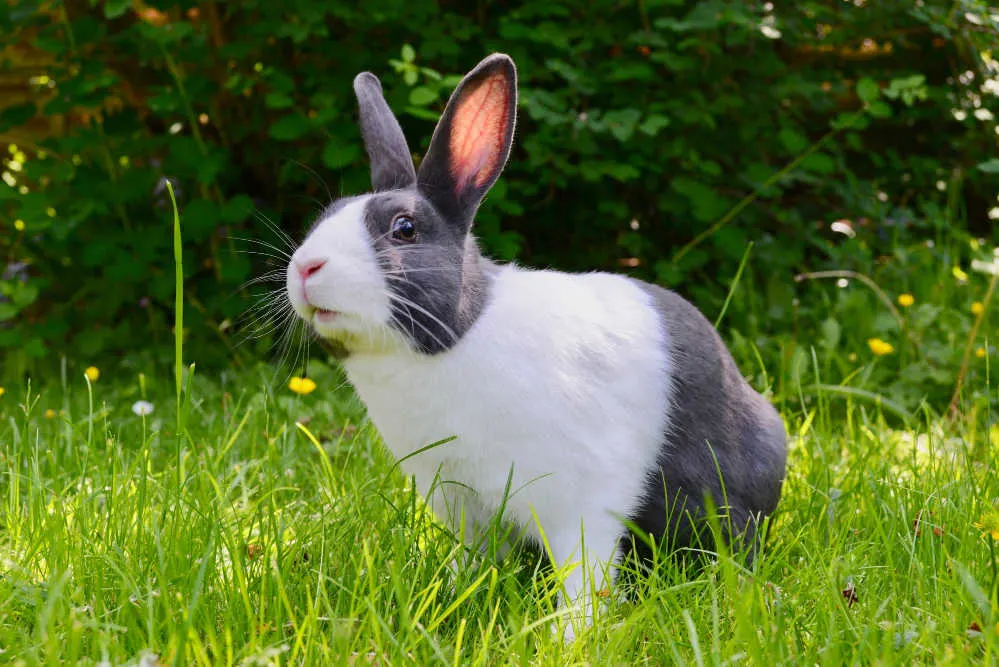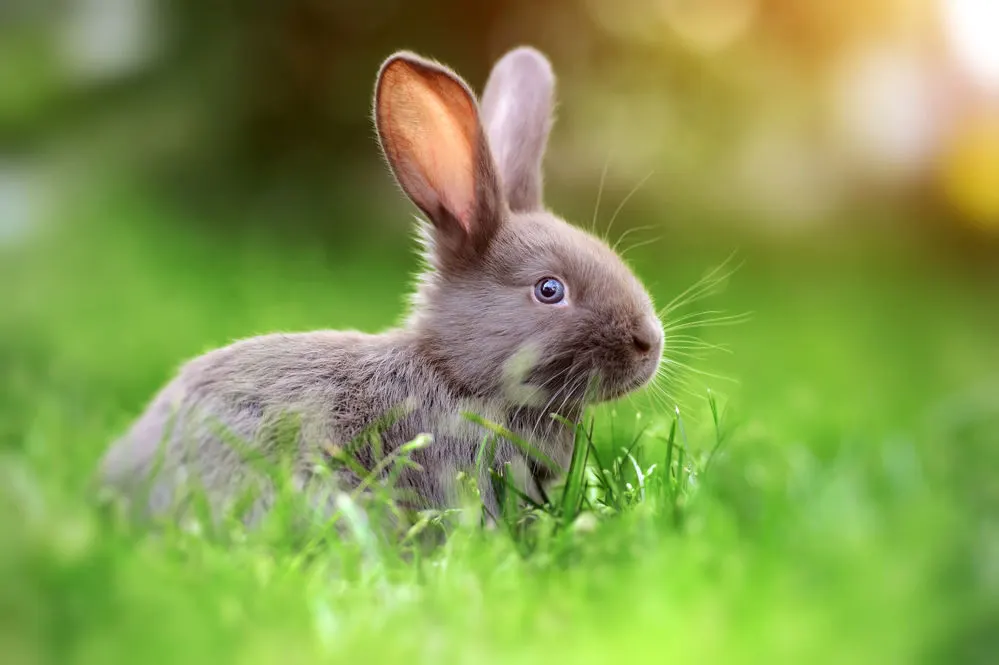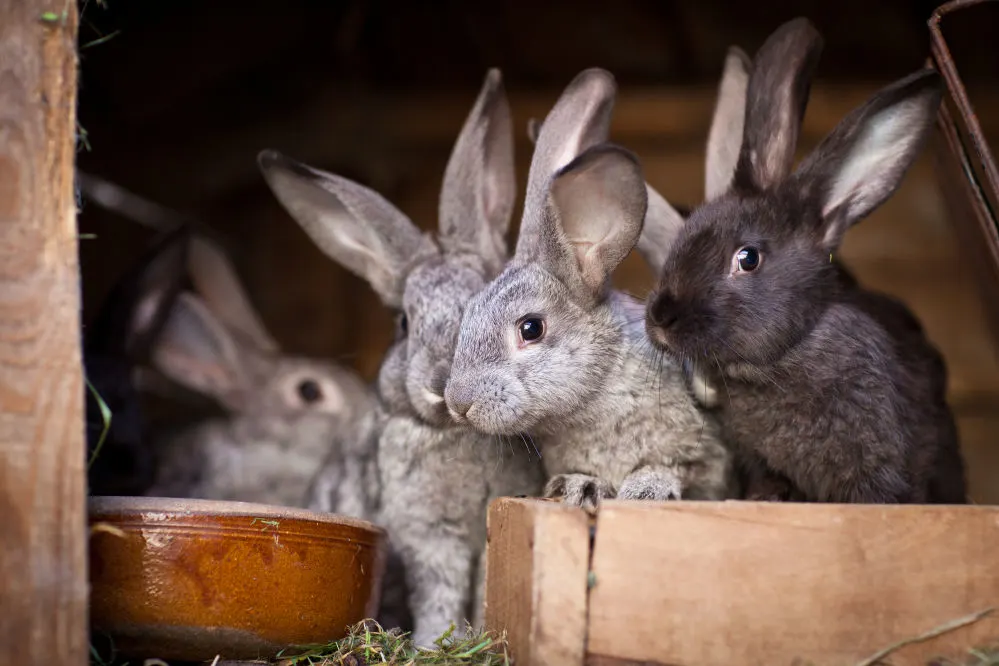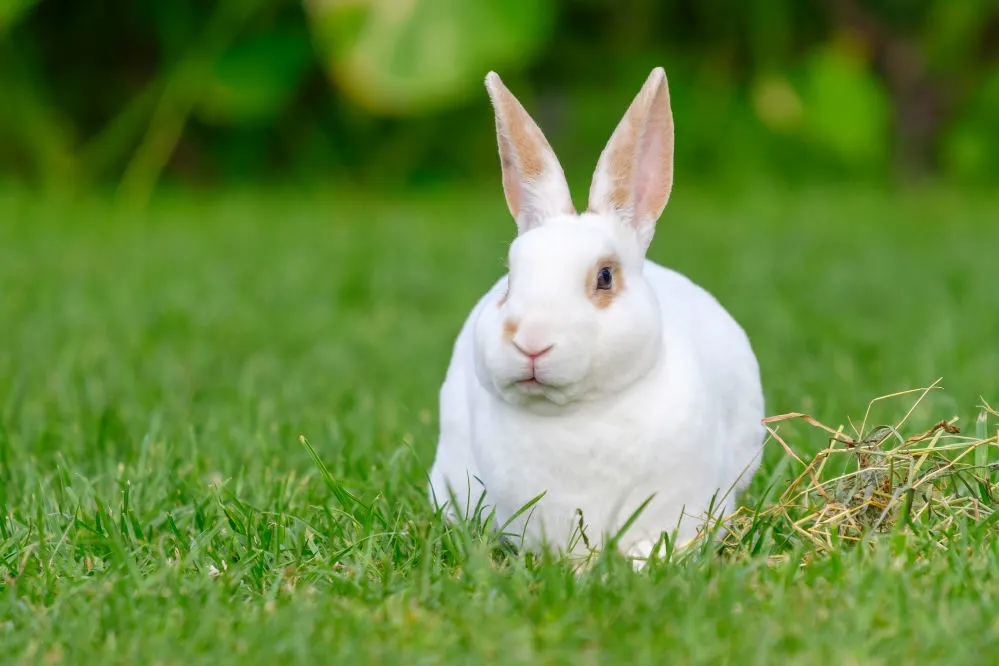Whether you’re a new small pet owner or a veteran, proper rabbit care is essential to ensure your bundle of fluff thrives. A nutritious diet with all the necessary components is one of the critical factors for maintaining a rabbit’s digestive system and allowing them to live a healthy life.
From fiber to vital minerals and vitamins, rabbits have an extensive list of ingredients and a balance of nutrients that should be part of their daily meal and diet. This includes organic produce as well as specific types of rabbit pellets.

Unsure if your pet’s pellet feed is up to scratch? We’ll guide you through the various typical ingredients in this product and their nutritional value in order to help you successfully navigate the ins and outs of proper pellet components.
Rabbit food pellets ingredients & why they’re important
The contents of indoor rabbit pellets are vital to note in order to purchase the right kind of food your fluffy friend needs. Knowing what to look out for is also essential for your rabbit’s development, as they need specific food for certain stages in their life.
Take a look at a few general rabbit feed ingredients and the reason for their inclusion.
Dried hay or grass
Two main pellet types to consider are produced with a base of hay or dried grass hay. The most common, however, is between Timothy and alfalfa hay. The alfalfa-based pellets are mainly used for baby bunnies since they have a high content of calcium, perfect for growing and young rabbits, while Timothy-based pellets can be eaten by rabbits of all ages.
As hay is mainly the base material, this often makes it a hard and greenish-colored product. The hardiness of this food source offers a tough substance for your rabbit to nibble on, which promotes healthy teeth by naturally wearing them down.
Hay and grass are also imperative for bunnies to get their daily amount of fiber, which helps with digestion and keeping their bunny poop healthy. While you can feed your rabbit these foods in pellet form, dried hay and grass also can include other vitamins and minerals that your bunny needs.
Regarding fiber content within your chosen rabbit pellet product, you’ll want a minimum of 18% for a healthy rabbit diet.
Protein
Protein is an essential factor in any rabbit’s diet to ensure muscle gain, and more so in baby rabbits that are still growing. If you’re looking for a higher percentage of protein for younger rabbits, you can look for pellet products with alfalfa as its base material.
While protein is essential for young rabbits, mature rabbits need less of this substance as they grow more slowly once they hit adulthood. When looking at the pellet ingredient list for adult rabbits, be sure to purchase a product from your local pet store with a 12-15% protein content.
Fat
While fat is less important in a balanced diet, you’ll often find this included in the ingredients list of pellet products. Fat is often associated with a handy energy source for rabbits. However, too much fat can lead to a number of health issues.
When shopping for pellets, you’ll want to look for a food source with less than 3% fat to keep your pet to a healthy rabbit diet.

Vitamins & minerals
A variety of vitamins is usually included in rabbit pellet mixes. Bunnies often ingest vitamin A through Timothy hay, which is a common ingredient in pellets. Other vitamins and mineral supplements in pellets include:
- Vitamin C
- Vitamin D
- Vitamin E
- Calcium
- Copper Sulfate
Tips for pellet feeding for a rabbit’s diet
Much like guinea pigs with hay, rabbits need a wide variety of food intake (including plenty of hay) to ensure a healthy and nutritious diet. While pellets are a convenient and cheap way to feed your rabbit, they hold a tiny percentage of what they need on a day-to-day basis.
Pellets are a great way to add a sprinkle of something extra to your rabbit’s daily variety of leafy green vegetables, hay, and grass.
However, take a look at a few tips in order to gain insight into proper pellet distribution for your rabbit:
Pellets should not be the primary food source
While this food type is a lovely way to ensure your bunny gets all its vital fiber, nutrients, and minerals in one go, pellets should merely be an addition to fresh produce for rabbits to ensure proper growth and prevent health problems.
Rabbits need fresh water and fresh vegetables in their diet to avoid malnutrition and weight gain. This includes products such as green grass, hay, and leafy greens, which contain everything from protein and minerals to Vitamin B6, Vitamin C and folic acid. It’s best to feed your rabbit small quantities: so 0.88 ounces (25 grams) of pellets for every 2.2 lbs (one kg) of your rabbit’s body weight on a daily basis.
Consider organic pellets
Quality, in the case of your pet rabbit’s health, is always better than quantity when it comes to pellets. If you find artificially colored pieces or a soft pellet consistency, it’s unlikely that the pellets are organic.
An organic product is produced without harmful chemicals added during production, such as plant pesticides. Be sure to research the company or brand beforehand to determine whether the organic product aligns with sustainable and eco-friendly production guidelines.
A great example I found is the Fortified Rabbit Food brand, which ensures quality using small-batch production techniques.
Check the ingredients
With some pellets including added fruity flavors and high-fat content, it’s important to be aware that some ingredients can actually be harmful to your rabbit. From weight gain problems to poor nutrition health effects, there are many problems your bunny can develop from “junk foods” on the market.
You’ll need to read the ingredients to ensure you know exactly what your rabbit is ingesting. If you see corn and soy as one of the first names listed, you’ll know that the product will not be favorable in aiding your rabbit’s digestion (as they need a high fiber level).

To ensure your bunny is not binging on low-quality pellets, you’ll also need to check that the fat level is lower than 3% in total.
Rabbit owner guide to pellets | Final thoughts
As your rabbit relies mainly on you for its food intake, understanding what’s inside the pellets you buy is an important component of keeping a healthy and happy pet rabbit.
There are a seemingly unending number of rabbit pellets on the market. By adding your knowledge of proper ingredients, you’ll have an easier time unearthing the glitter from the gold regarding healthy and nutritious rabbit pellets.
Now that you know everything about pellets, how about finding out if rabbits can eat strawberry tops?
Steph Dyson is a travel journalist by trade but a lover of all small pets. She’s been a pet mum to everything from gerbils to guinea pigs, rabbits to hamsters, and fish to dogs of all shapes and sizes. She wants to share her years of experience with small pets and make Small Pet Guides the go-to website for pet owners seeking information and care advice.

